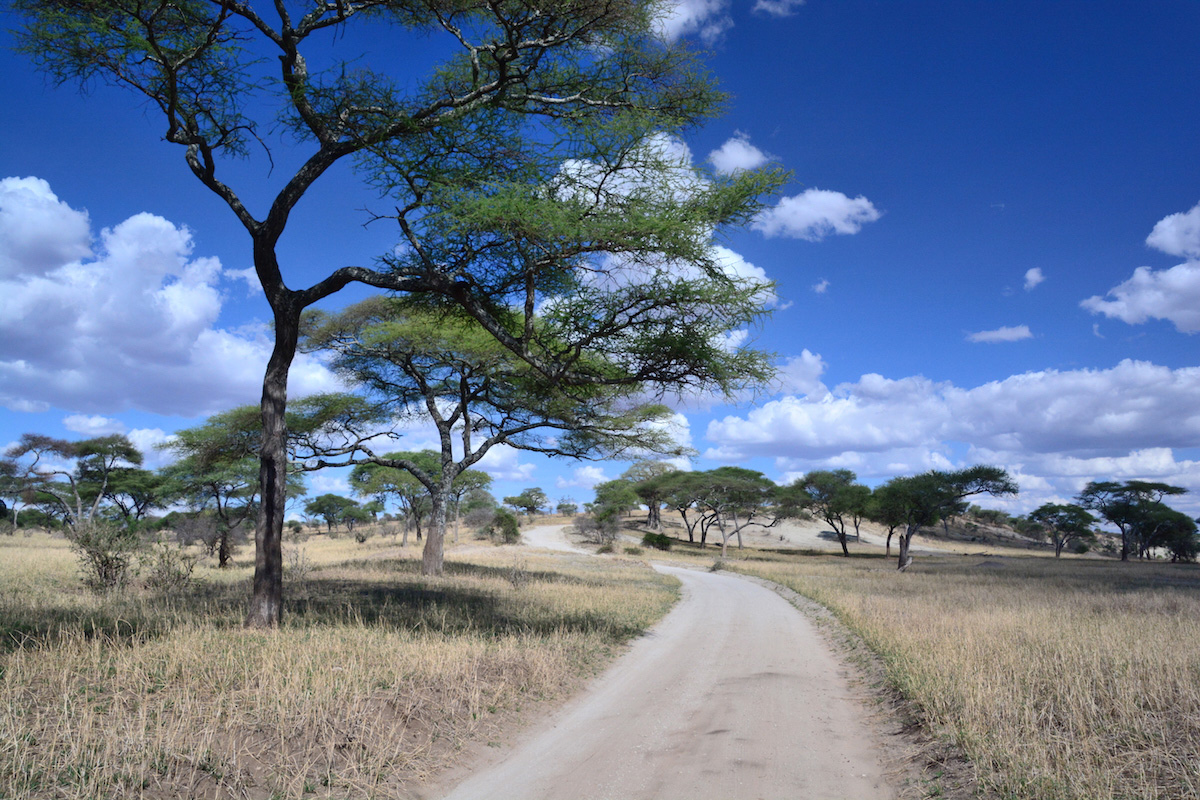
The white man – he was the only white man I’d seen that morning, besides myself – took a bite of a shiny, green apple. Before he had finished chewing, he set it down and removed a cellphone from his weathered jacket.
“If she’s not gonna give you truth,” he screamed into the receiver, mouth still full of food, “God will pass his judgment.”
He returned the phone to his pocket, then picked his apple back up. I thought for a moment that his comment might’ve been directed at the black woman sitting next to him, but her indifference in the face of it seemed to negate that conclusion. Their similar physical appearances – they were of the same age; both dressed in clothing that must’ve looked incredible 30 years ago; they even sat with comparable postures – suggested they were traveling together, at least.
I looked out the window onto the Nairobi street where the bus was parked, when the second white man I saw that day emerged from a building that appeared to be a hair salon – more on account of his impeccable hair than the structure itself. I started to wonder what someone like him might be doing in a place like this, when all of a sudden he appeared beside me, standing in the aisle with a notepad I didn’t see him carrying when he was at street level.
“May I see your ticket?”
He looked down at his clipboard and smiled. “Ah yes, you must be Tom.”
“Robert,” I replied.
“Ah yes, that’s right.” He placed a checkmark next to the name he called me, which was written on mine and no less than half a dozen other places on the seat map. “Welcome aboard, Tom.”
After what felt like an eternity, the bus began to slowly pull away, and I wondered whether I was trapped in a David Lynch movie – or, at the very least, if I was still asleep in my hotel room and imagining it all. Surely, something as quotidian (for me, anyway) as a media trip couldn’t take such a bizarre twist so early on.
But then, I remembered a phrase my liaison at the safari company had repeated several times during our exchanges. This is Africa.
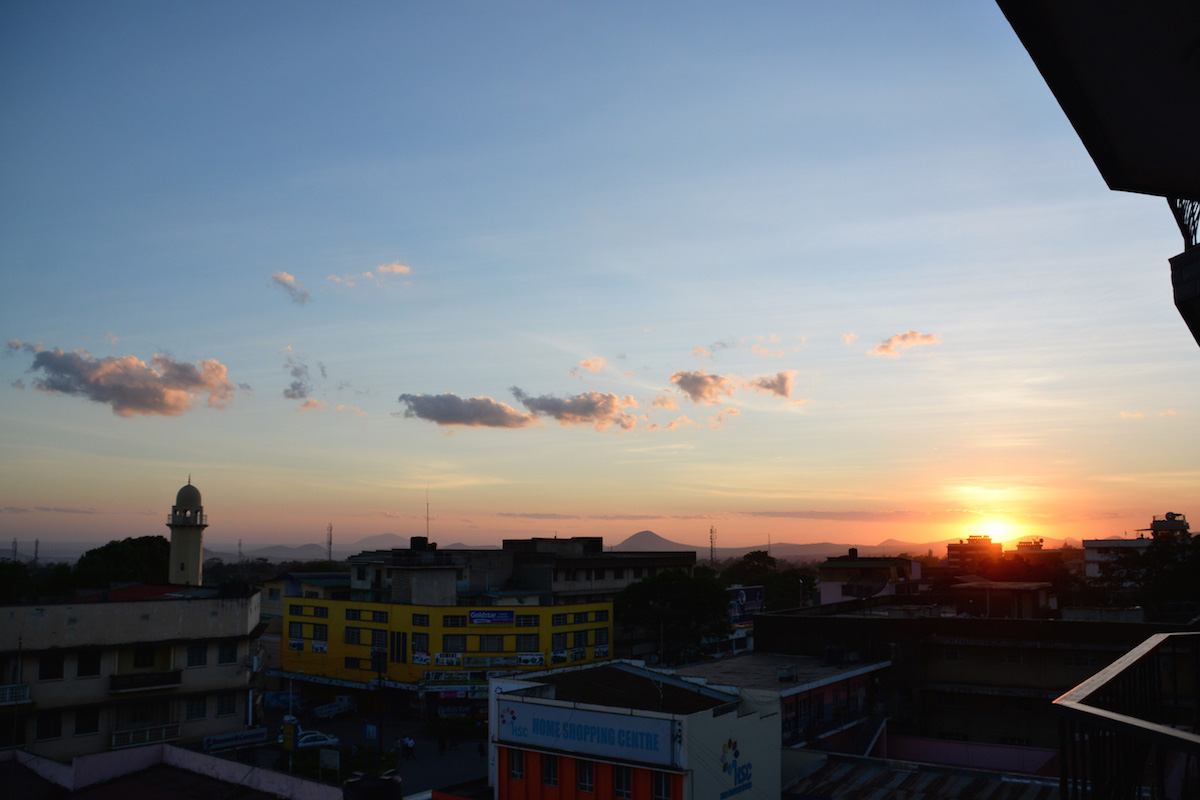
It doesn’t make sense that a place as ordinary as a city could be so strange until you’ve spent a few days in Africa and realized how at odds the concept of civilization is with the rest of everything.
Within minutes of leaving Arusha, Tanzania, where most East African safaris start, the only sign of human existence is a lone power line stretched along one side of the road, and the occasional Maasai person clad in a bright red, orange or blue robe. The soil color changes several times before you reach the next settlement – from a deep brown that’s almost purple, to a bland clay tone, to a red as deep as how I imagine Martian soil must be – which says nothing of the fluctuating topography, vegetation and the position of the sun in the sky.
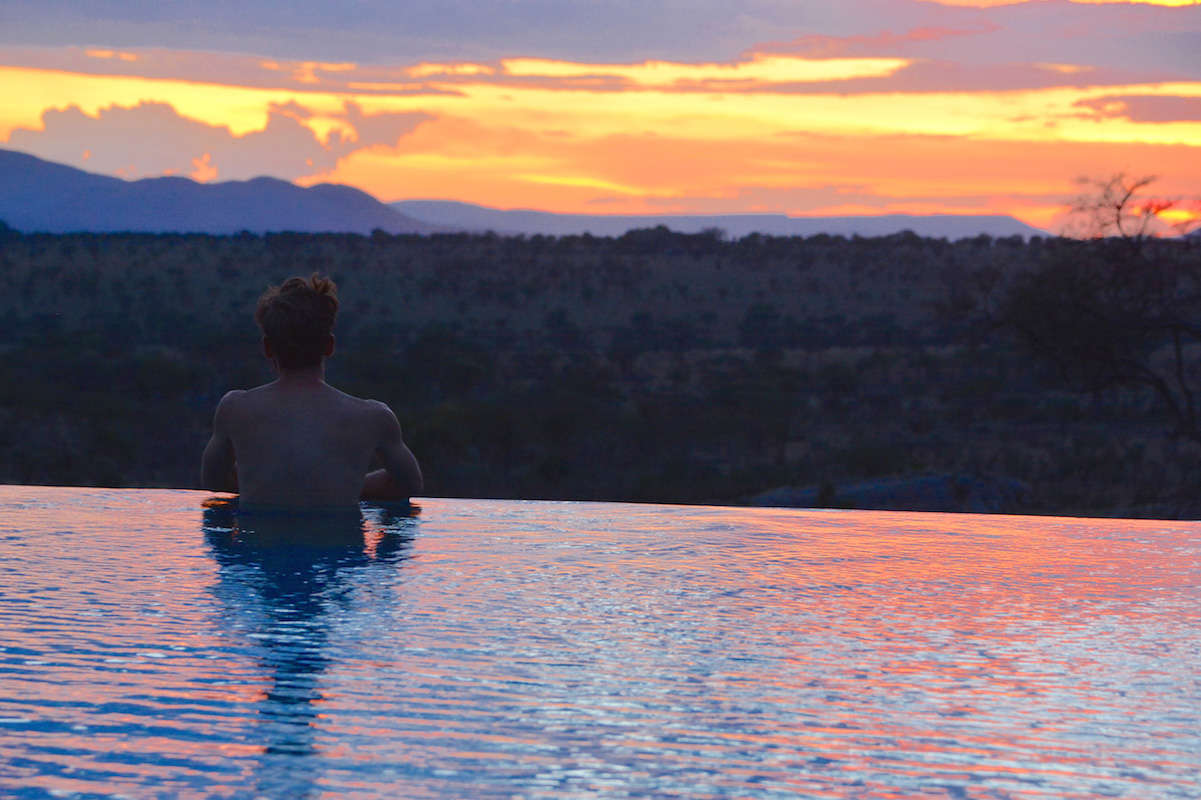
Timo is a man of maybe 50 and my fellow safari-goers perceive his lack of narration as awkwardness, or maybe even aversion to our loud voices and crude language. But I appreciate that he mostly allows our surroundings to speak for themselves as we drive across the Serengeti, interjecting only to fill in the gaps his experience has taught him are too wide for the average human mind.
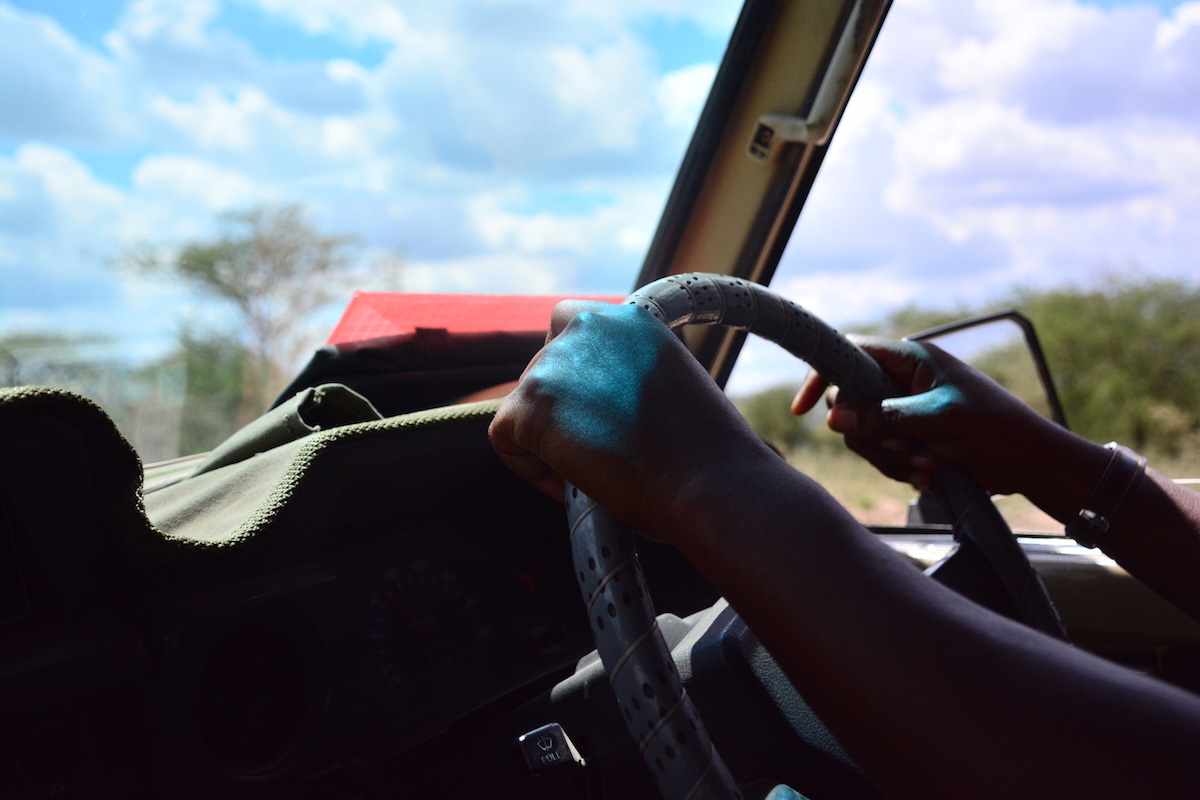
“They were going to build a highway here,” he explains, after joking about the free African massage our high velocity along the bumpy road afforded us. “But thankfully, the idea was shot down.”
Just then, he makes a sharp left turn off the road and into the scrubby brush. We’re on our way, he reminds us, to Olduvai Gorge, the origin of our most complex ancient ancestor, Homo habilis, who lived here 1.9 million years ago – in the same ballpark, archaeologically speaking, as the formation of Ngorongoro Crater.
“You could say,” he states matter-of-factly as our car stops at a makeshift museum set up on the edge of the gorge, “this is the birthplace of humanity.”

The museum’s density of information and artifacts is overwhelming, and belies its small size: Fossils of extinct antelope the size of elephants; a bicycle ridden by the Japanese man who traveled the entire migratory path of humans, from Tanzania to Patagonia, but in reverse and without the use of fossil fuels; and a gift shop, whose most bizarre piece of merchandise is a leather keychain, made in China, and emblazoned with the name “Pam.”
But the most fascinating aspect of it, to me anyway, is a plaster cast of footsteps found in the gorge, laid nearly 2 million years ago by our aforementioned ancestors – the very first footsteps ever laid by man, at least the first that left evidence we could find later.
The cast is fascinating, but even more fascinating is the what happened to the original footsteps: They were buried. Scientists covered the footsteps under several barriers, the chart above the cast explains, to protect them from us.
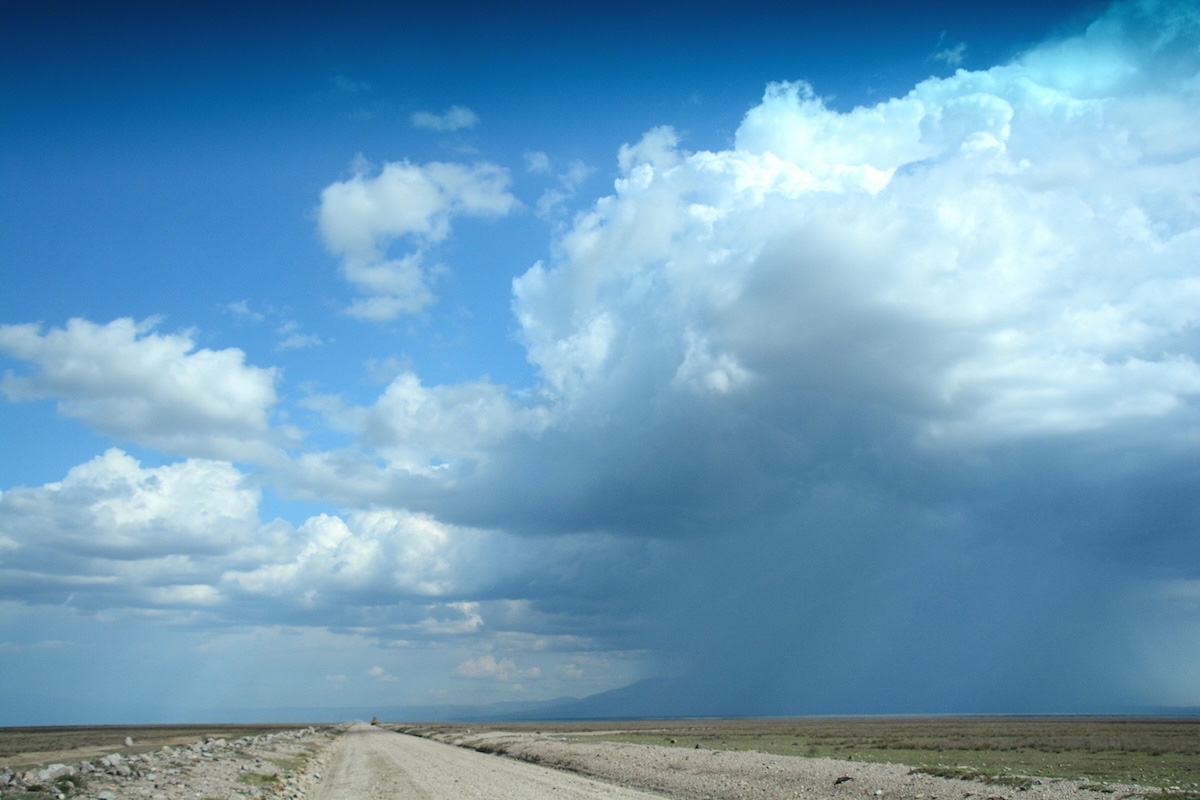
As we make our way across toward Ngorongoro Crater, a massive rainstorm has almost totally obscured the 2,000-foot wall of the crater – and all of the observable sky above it – yet the first (and only) thing that comes to my mind is the cheesiest song to come out of the 1980s.
A herd of zebras are crossing the road ahead, so Timo stops the car and instructs us to ready our cameras. The extent of the animals is seemingly infinite, and in all directions, and an endless line of wildebeest is migrating in the almost imperceptible distance, a few stray lions hunting amid the crowds of animals.
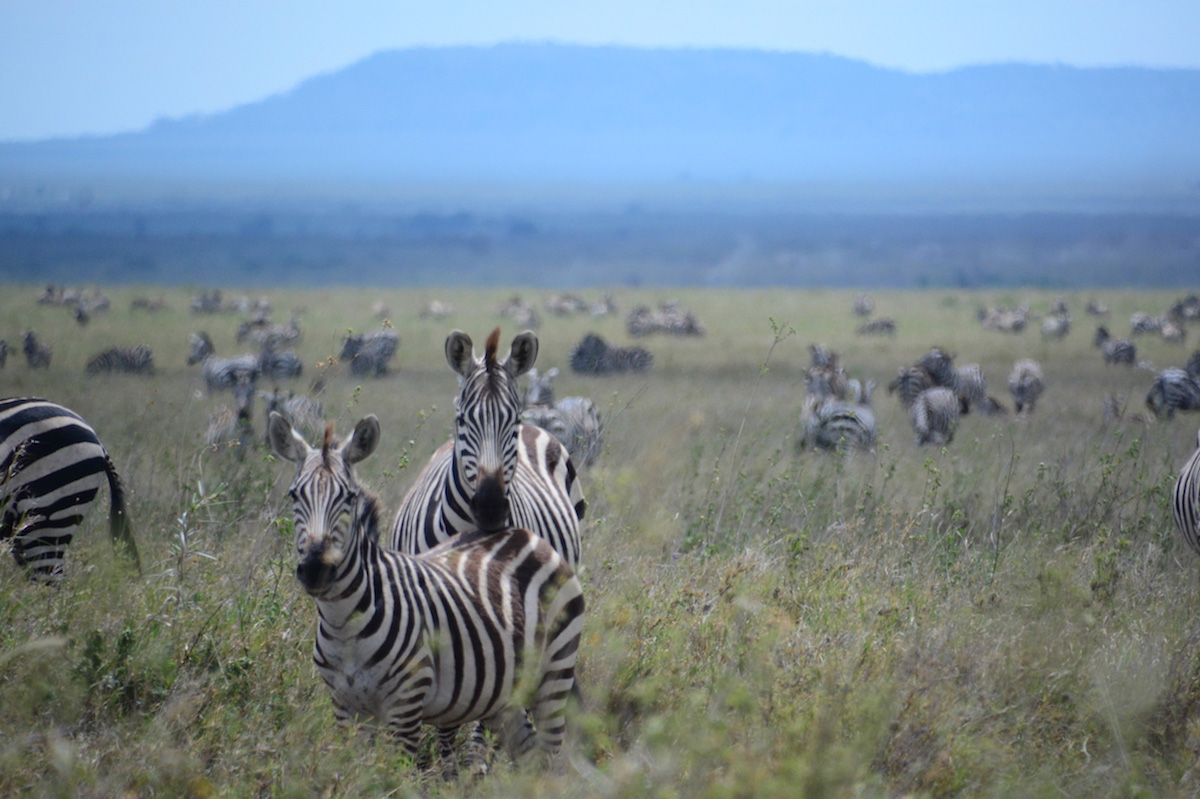
“You are lucky,” he breaks his hours-long silence. “The Great Migration has begun early this year.”
The size of the animal populations, we learn, is nothing compared to the journey they are making, which is really but one leg of an infinite oscillation between north – Kenya’s Grumeti River, or thereabouts – and south – the short-grass plains of southeastern Tanzania; between life – the birth of half a million wildebeest calves over two to three weeks in February – and death – nearly half don’t survive the journey. It is a cycle that repeats itself with minimal aberrations over time and, seemingly, no end goal.
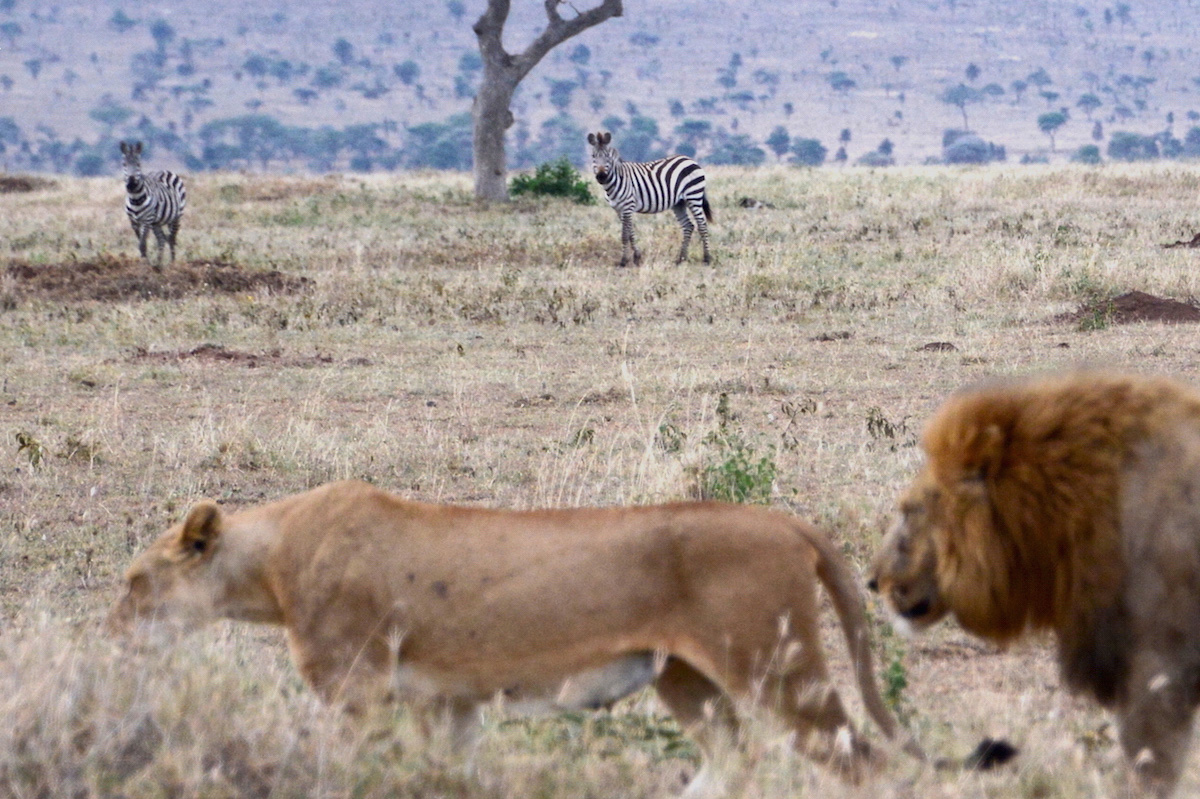
It is a story not unlike our own human one.
I mean, we walked across the Serengeti a couple million years ago, and eventually made our way to land’s end amid the glaciers of Patagonia. Billions of individuals were born – most died before their time and all but a few lived anonymous, meaningless existences – but at some point, we achieved a level of stability that empowered us – very, very few of us – to return to our ancestral homeland, only to go back from whence we came.
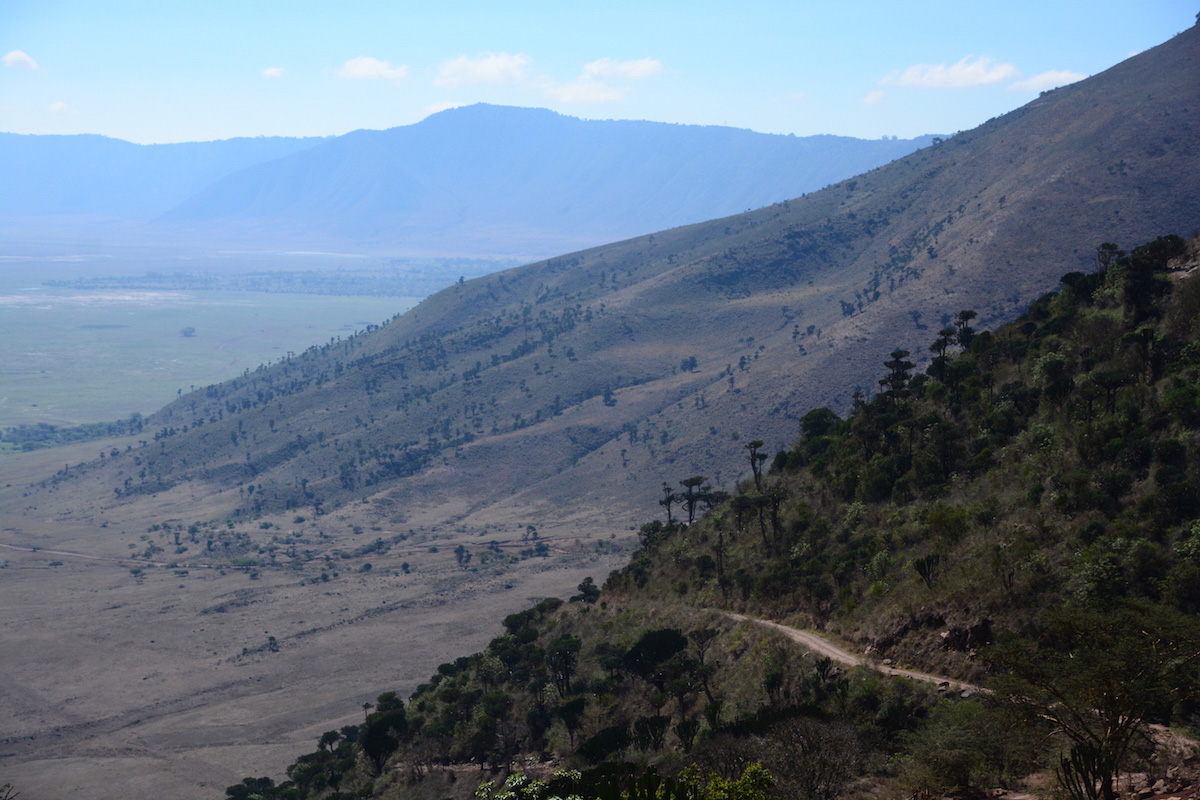
At any given moment when you’re down inside of it, you see thousands of creatures around you in all directions – mainly zebras, gazelles, flamingos and wildebeest, but also occasionally elephants, rhinos, lions and buffalo.
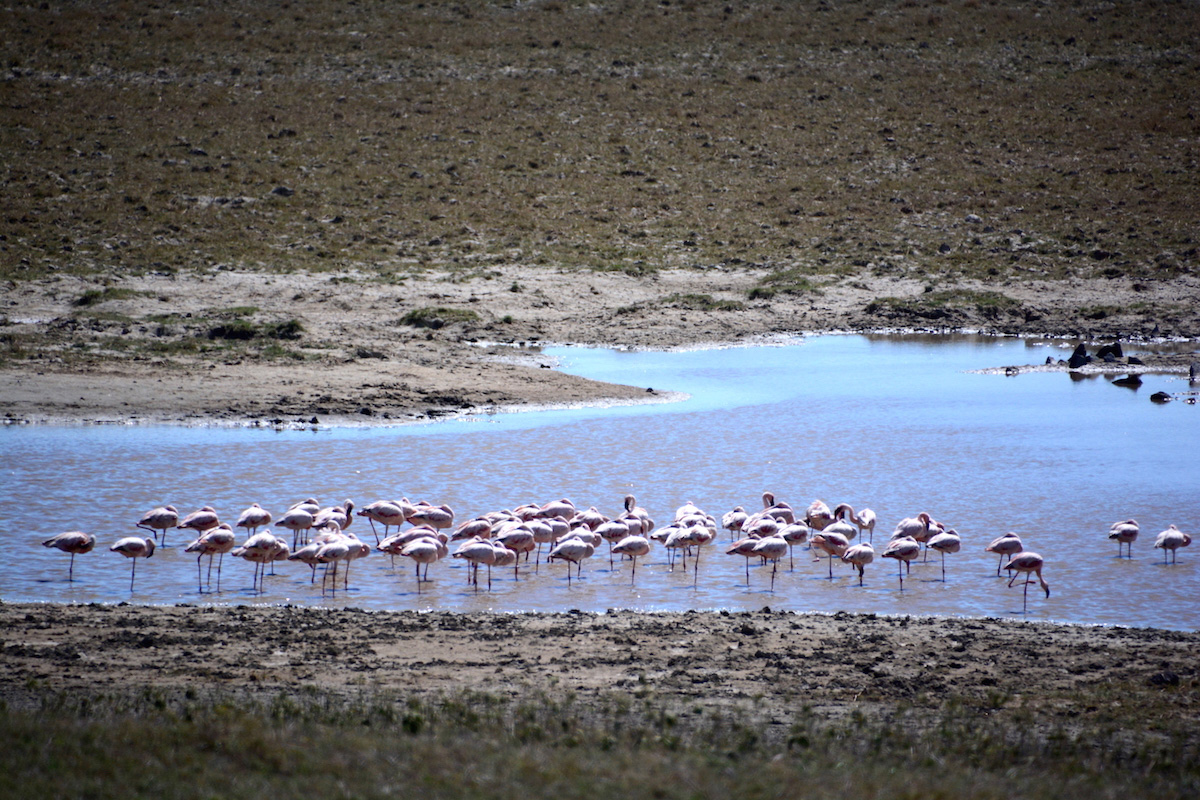
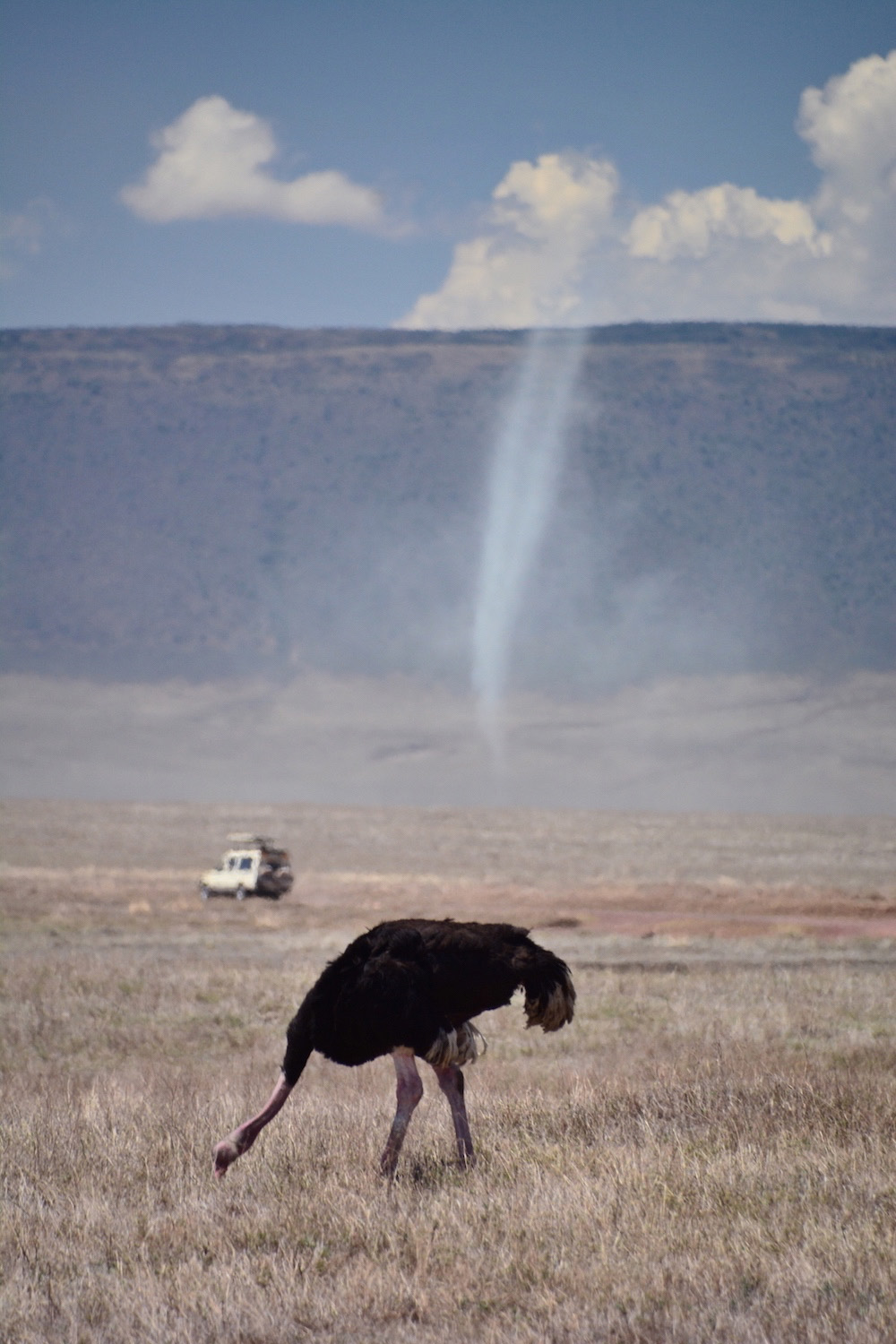
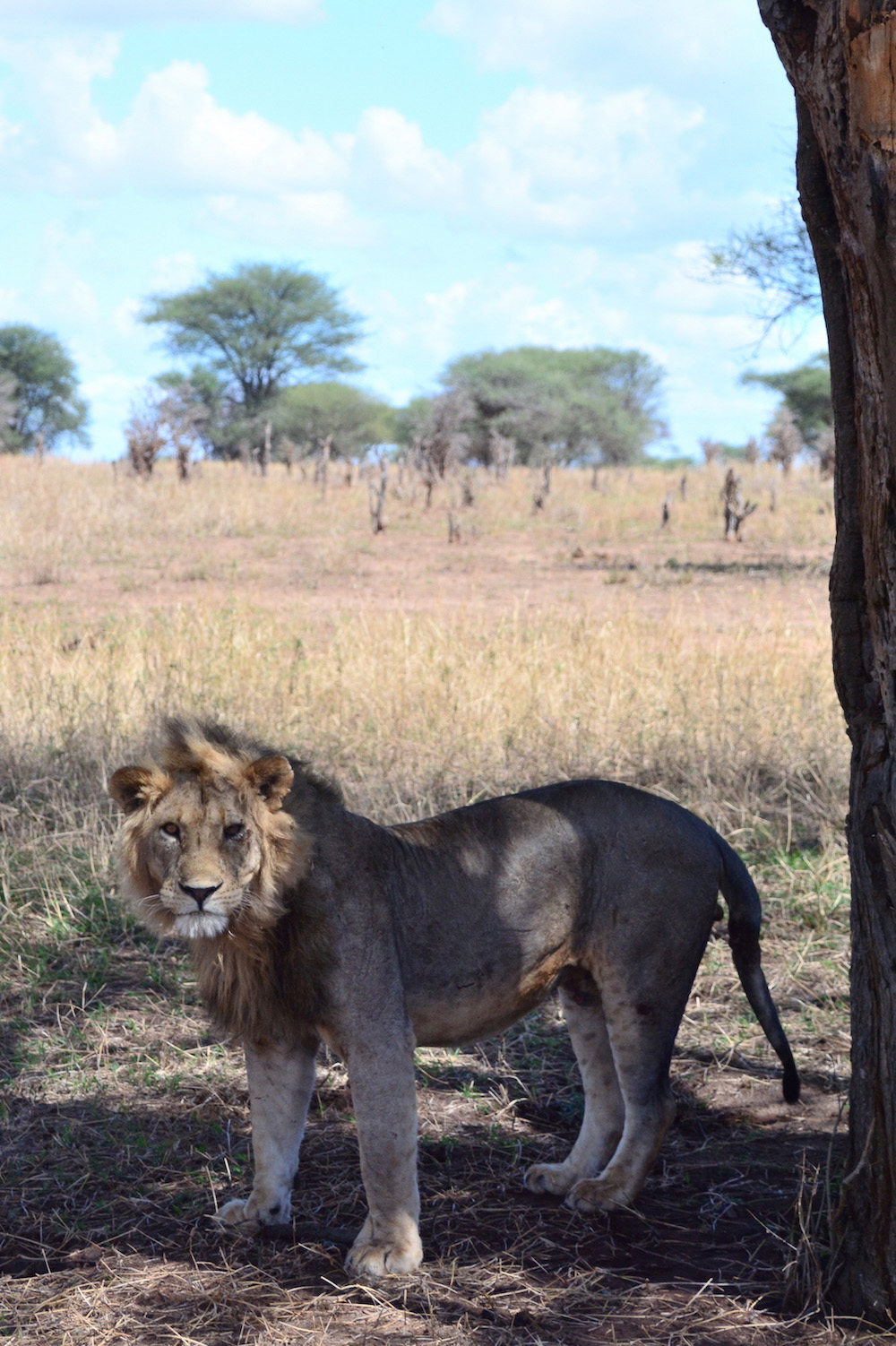
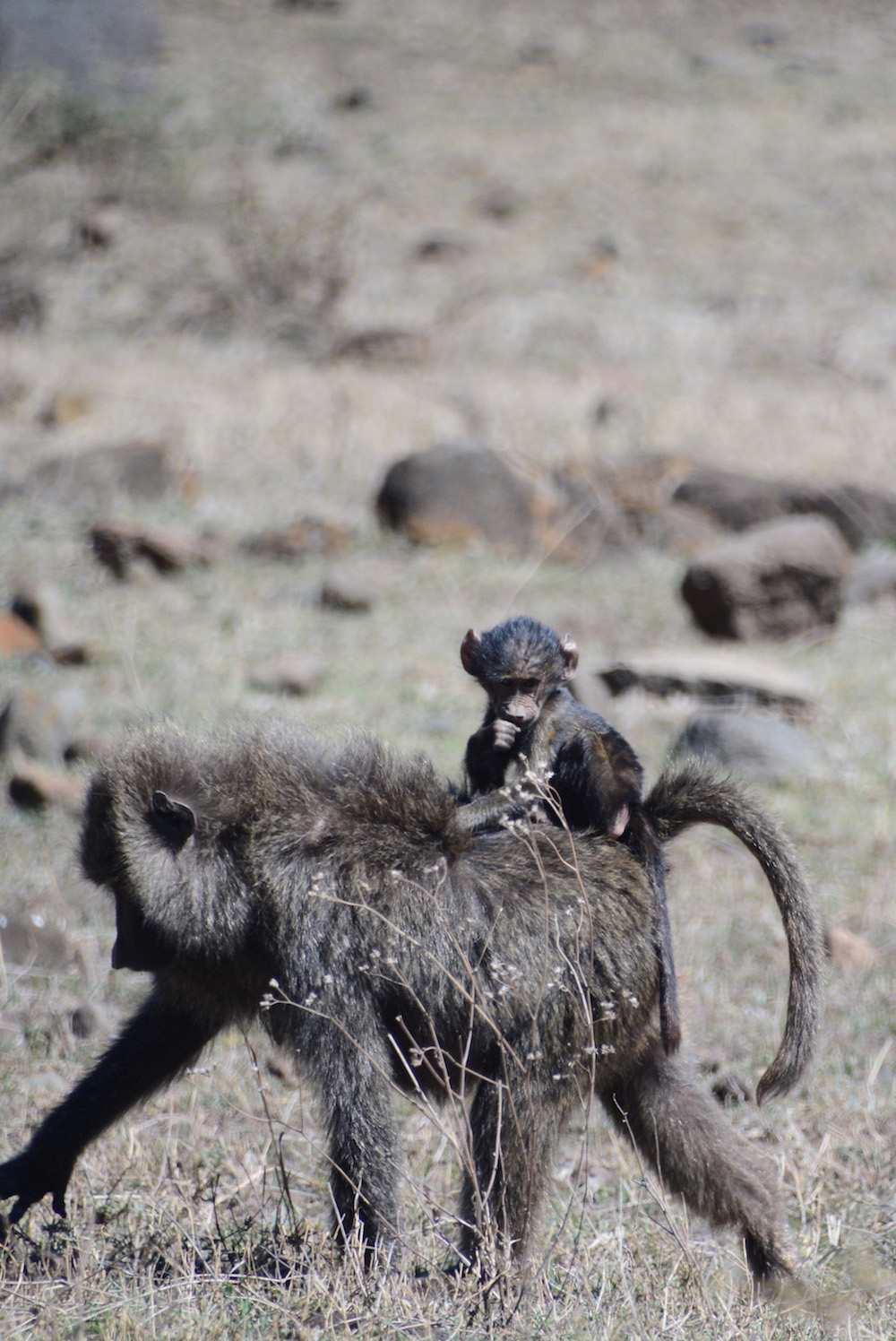
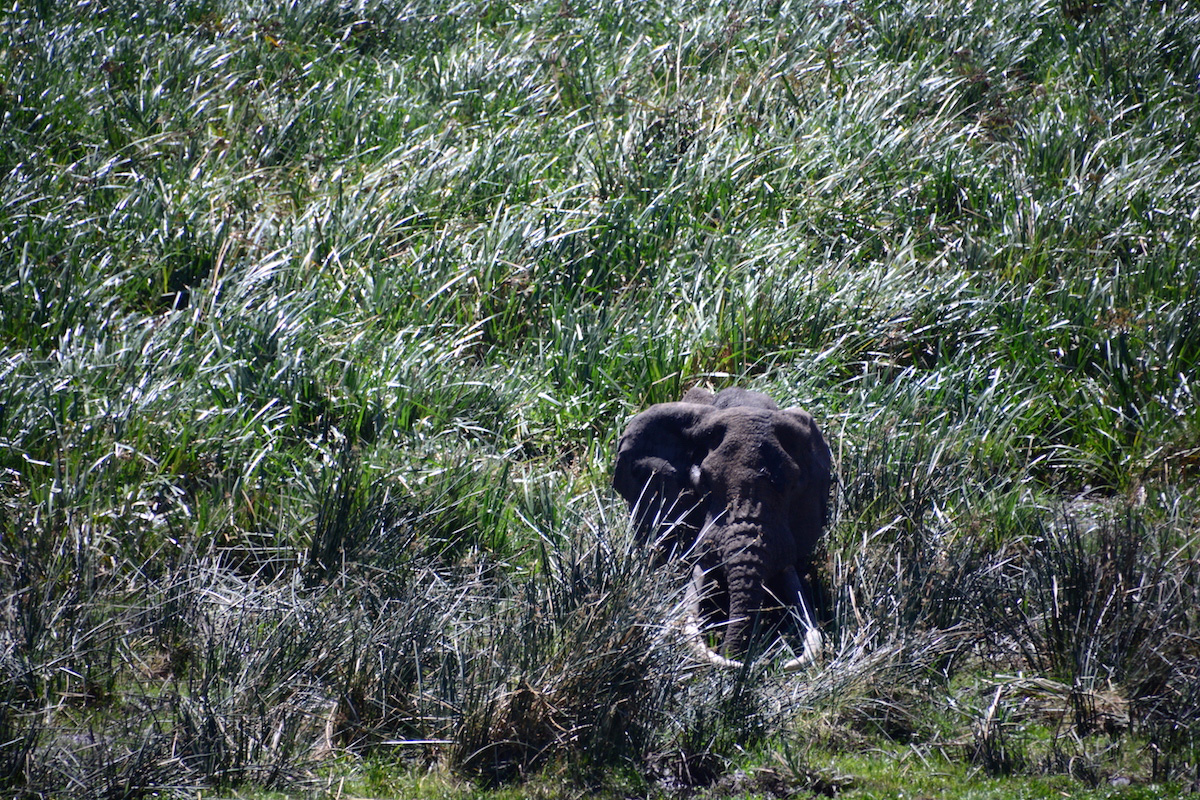
Yet it is only when you stop counting, and accept that you can observe only a fraction of a fraction of the crater floor at any given time, that you get an idea of the scale of wildlife in these parts, which exponentiates once you peer at a map and realize that although Ngorongoro occupies an area dozens of times smaller than the Serengeti, both are minuscule in the context of the African continent, and so forth.
Some experiences make you contemplate your place in the Universe, but this isn’t one of them. Being on safari in Tanzania makes me realize that neither the Universe nor planet Earth depends on my existence or perception, and that if there is an intelligent creator out there somewhere, he would find very funny indeed the idea that individual beings pray to him.
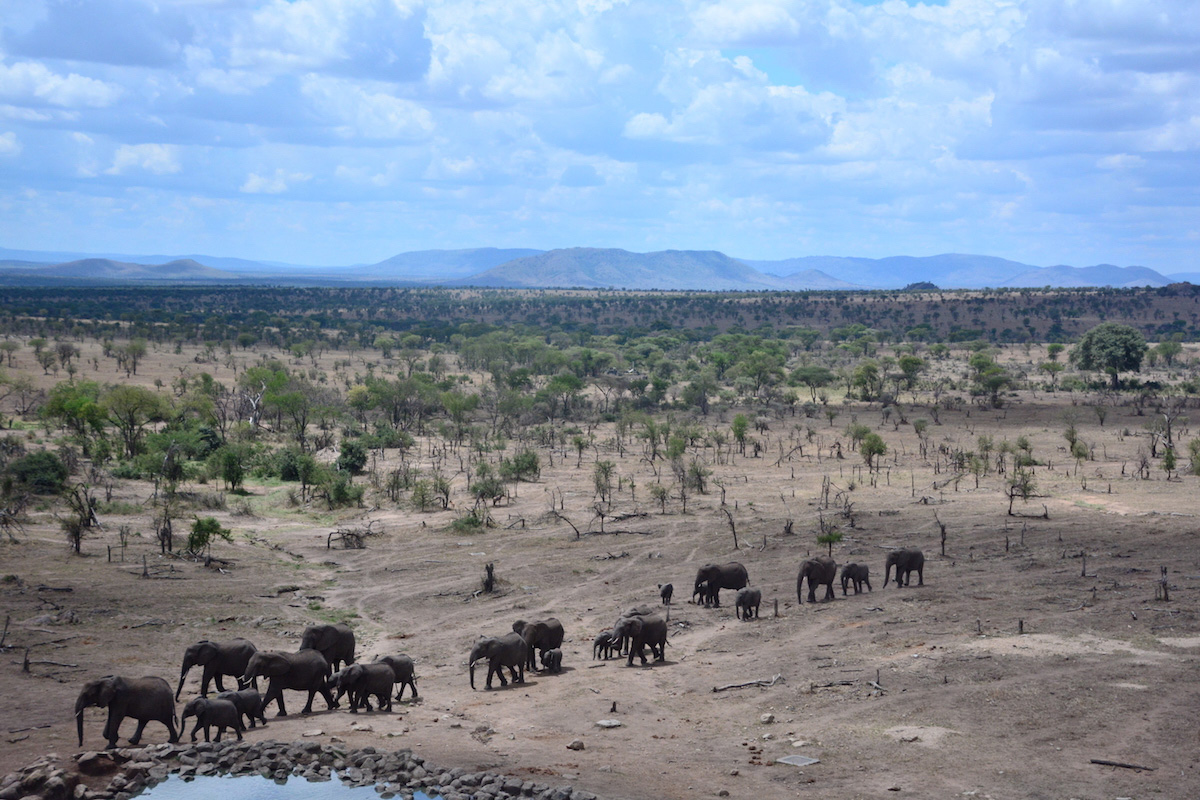
“Africa is not only the past, but the future,” the man assures me. “We have most of the world’s remaining natural resources – and every multinational corporation is setting up shop here.” It seems a superfluous fact to cite, considering the scale of the Serengeti around us, but an appropriate one given that we’re at a Four Seasons resort using high-speed Internet to glean facts about everything with see around us, touring a world-class spa facility that could just as well be in New York City.
Africans deserve to be proud of their homeland – and certainly, to reap the benefits of its riches, after centuries of being pillaged by the likes of my ancestors: This is a fact, and a just one. Yet I can’t help but wonder if it is possible – or avoidable, given how large the demands for energy and goods and entertainment and food and all the other aspects now considered a baseline for an acceptable existence will be – to conserve even a fraction of the Serengeti, or Ngorongoro Crater, or Tarangire National Park, or any of the millions of unnamed, unclaimed, untamed acres of wilderness in Africa.
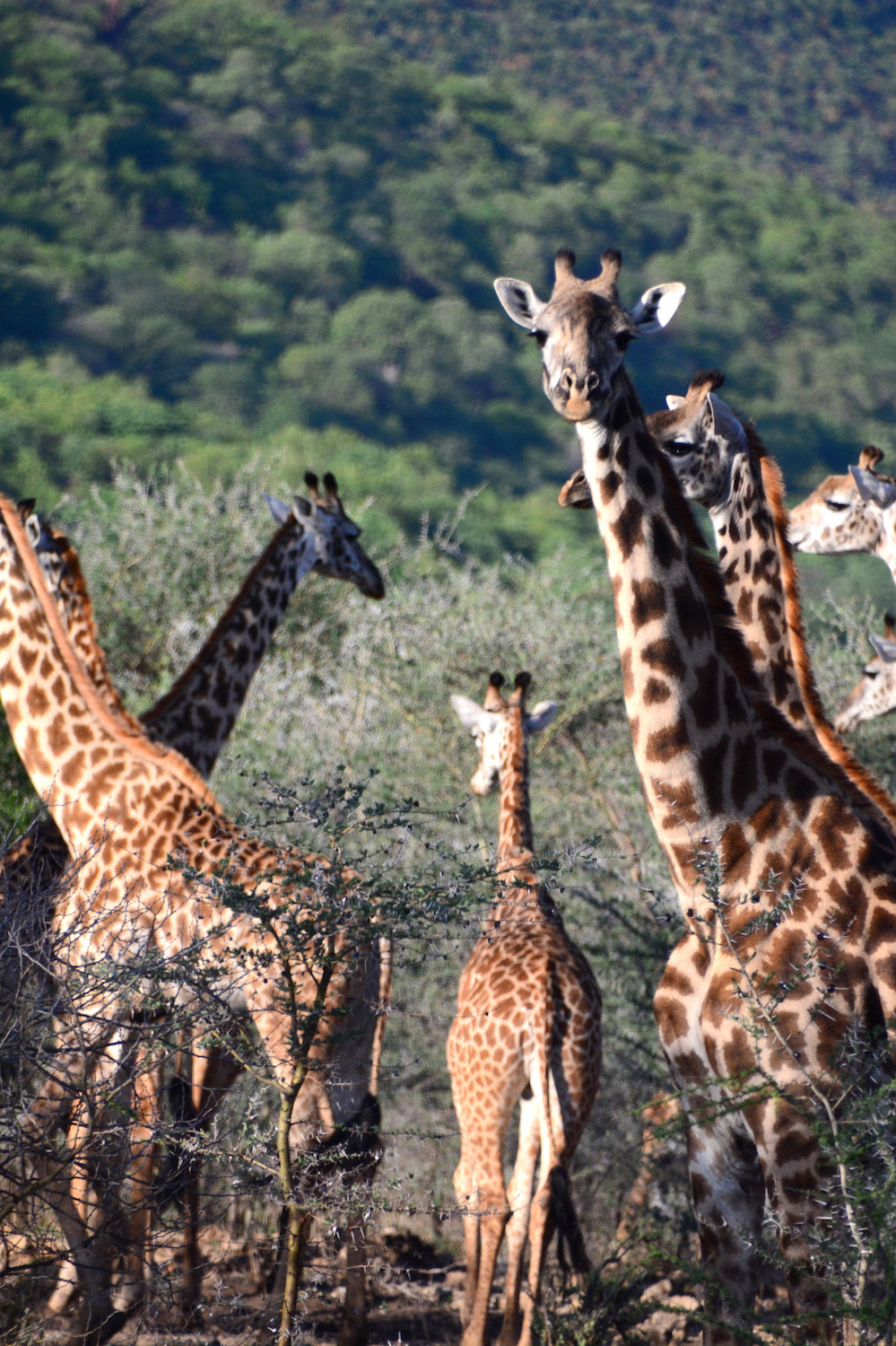
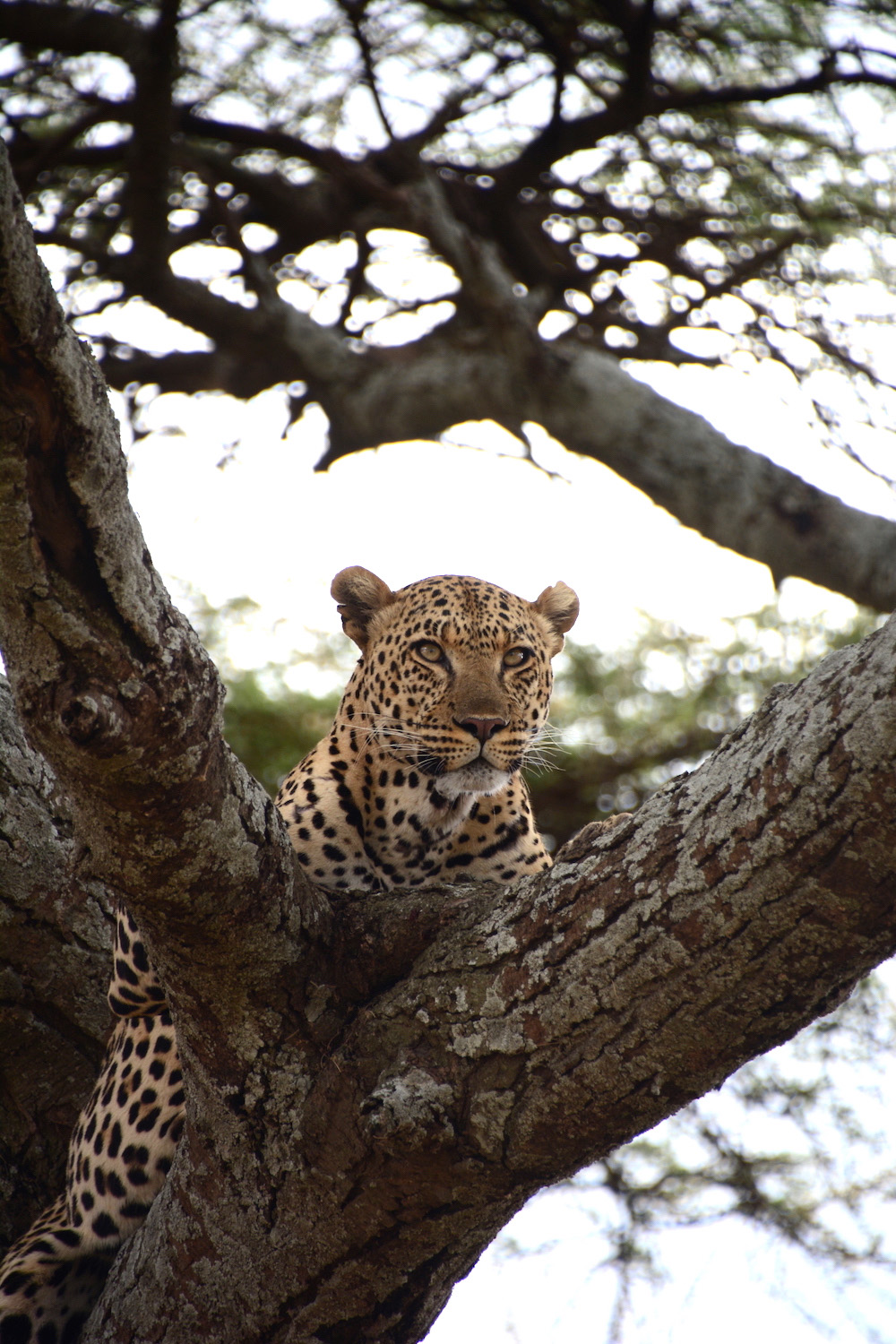
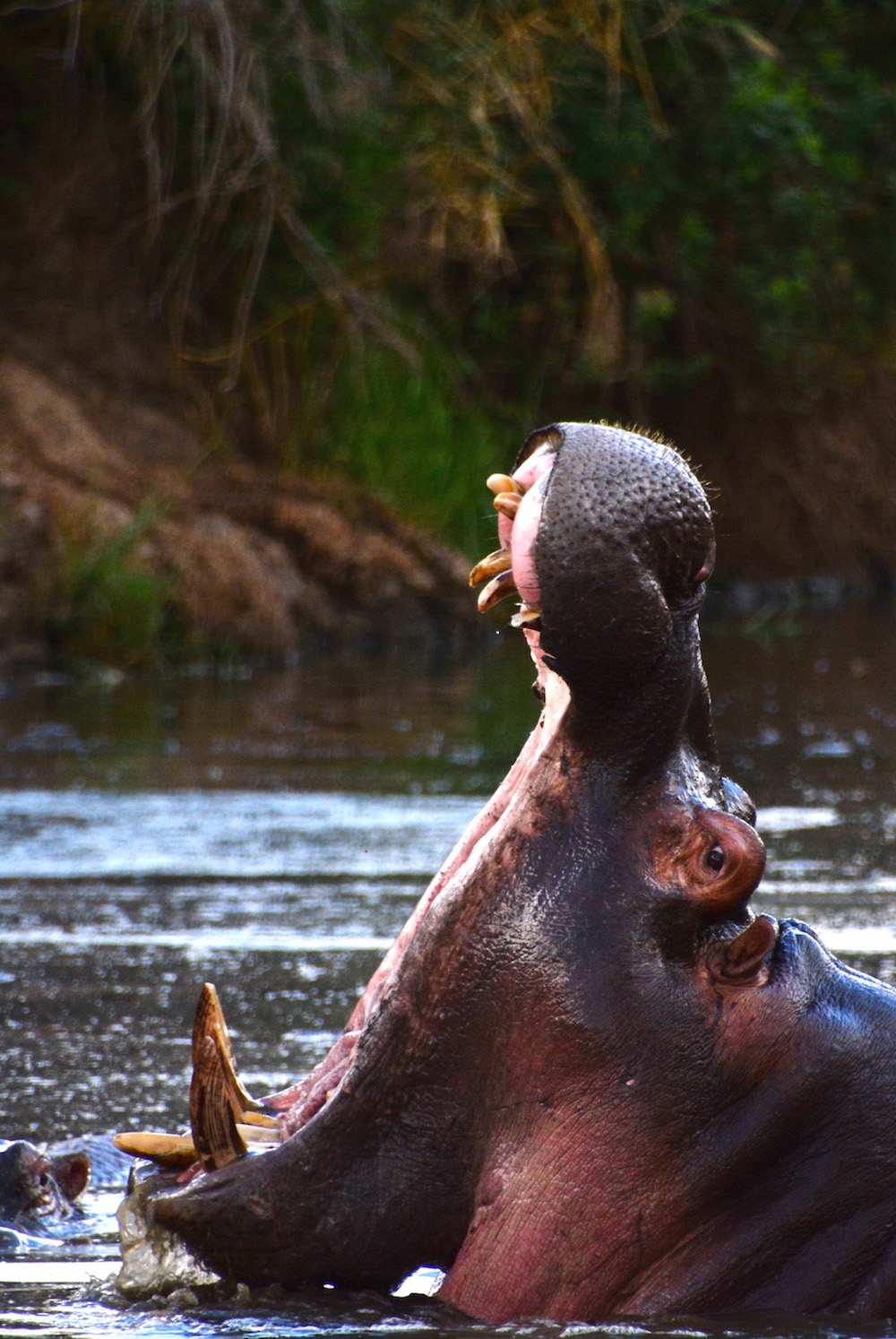
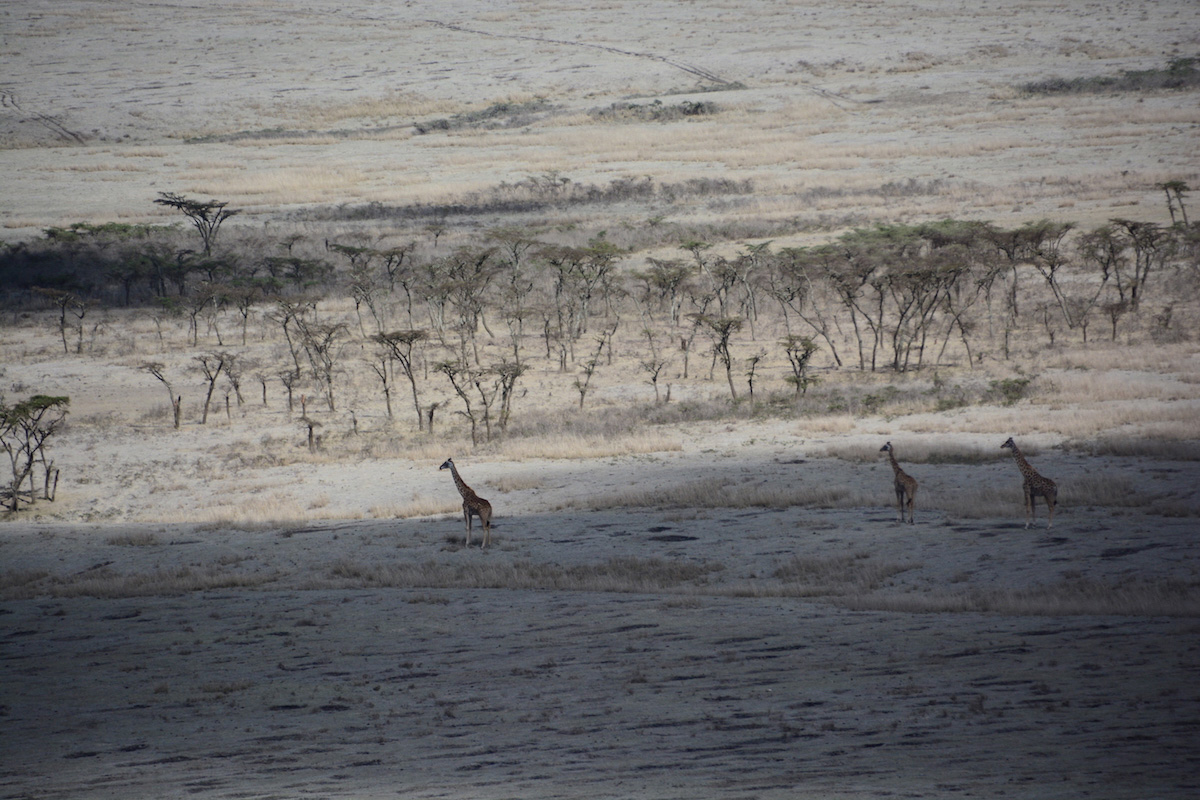
I feel curious, and, as a safari-goer, guilty: Hasn’t every great conquest throughout history started as a sort of safari?
Say there are a three dozen vehicles like ours cruising through Tanzania at a time right now, when the majority of the planet – and, certainly, Africa – still lives in abject poverty. Even if five more per cent of our population rises to affluence in the next century, and only a fraction of them are able and willing to go on safari here, and only two or three more ultra-modern resorts spring up from the nothingness, doesn’t the idea of a highway running through the Serengeti start to seem inevitable?
I say this not to judge humanity or myself: I have enjoyed my safari, perhaps more than any of my other travel experiences, and maybe all of them combined. It has made me feel both insignificant and all-powerful, that I have returned to my ancestral – our ancestral homeland – after eons and feel totally in control over it, in spite of all of the information my human senses can perceive suggesting that the complete opposite is true.
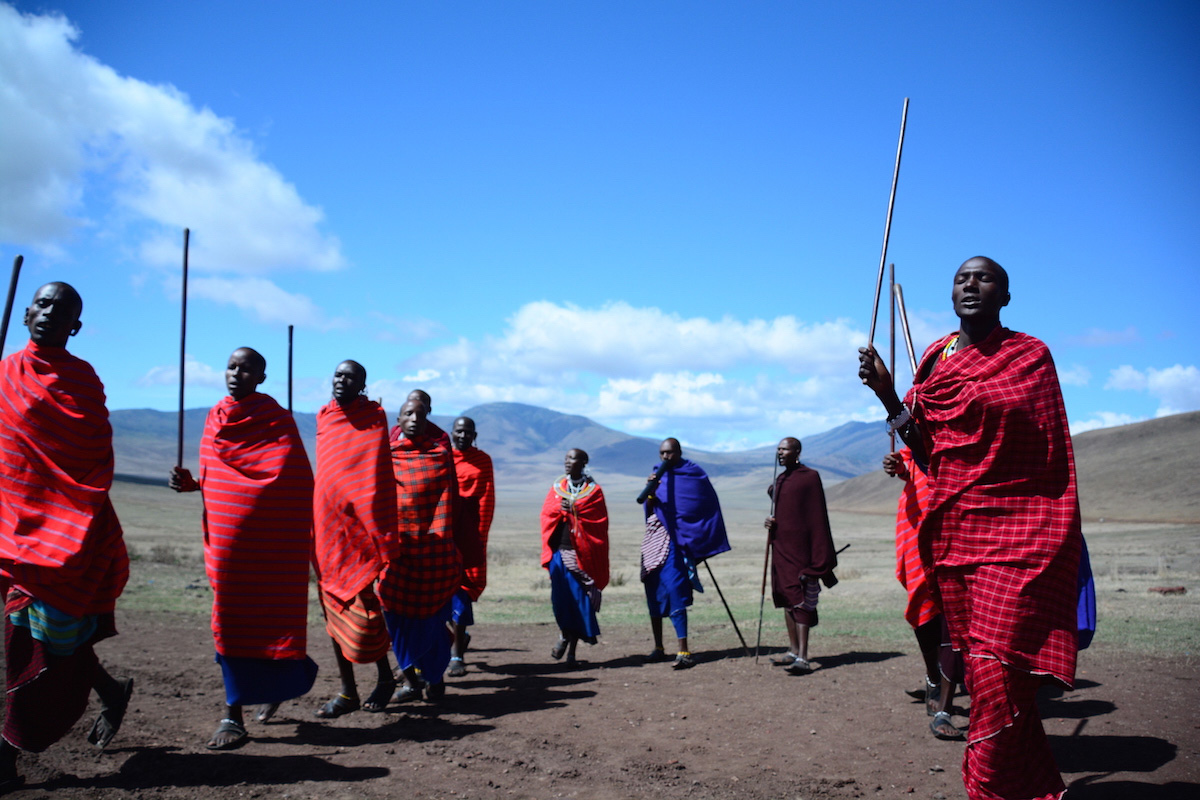
I came across a short story a few weeks ago, and it’s the only thing I’ve read that seems to explain what the whole business of life is about.
I’ll spare you the details – if you’ve made it this far, a couple hundred more words won’t kill you – but the point it gets to is that every single living thing that ever was and ever will be – you and me; the zebras; the Baobab trees; the Maasai; the executive board of the Four Seasons Group; the lions; and even the tiny serval cat – are manifestations of the consciousness, the Supreme Being, the energy, the creator, the destroyer, the regular Joe some like to call God.
And all interactions – conversations between you and me; groups of humans on safari or conquering something; wildebeest living and dying as they migrate; and the planet withering as we deplete her bounty – are really just this consciousness getting to know itself, an infinite undulation not unlike the Great Serengeti Migration, or humans coming full circle and returning here, or the destruction and rebirth that characterizes the Universe as we know it. Simultaneously quotidian and extraordinary, pivotal and meaningless at the same time.
Being in Africa hasn’t been a revelation as much as a reminder – if the theory presented in this story is true, and I do believe it to be, then I am everything that ever was and ever will be, from a strange man screaming curses as he bites into an apple, to the last doomed seed that floats through the last dust storm that blows across the spent land. And I knew all of it before I even began.
The journey is the destination: Migration is really all there is.
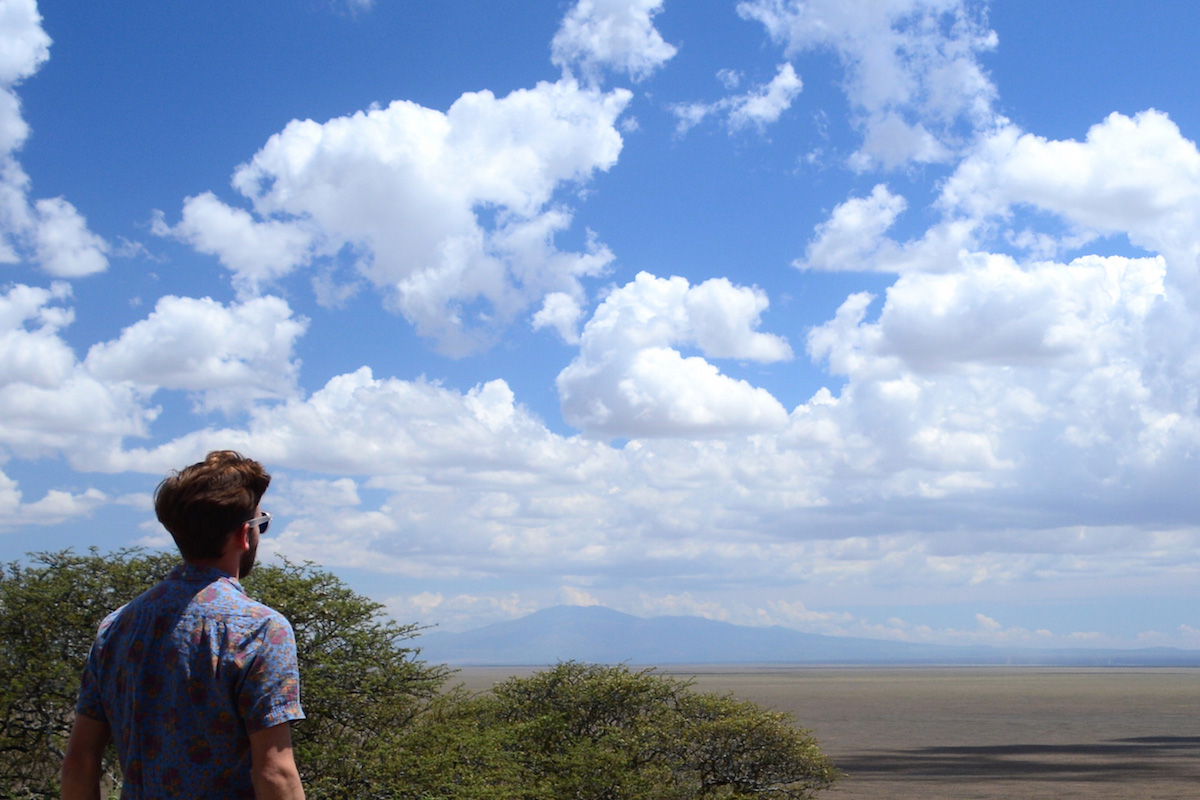
Disclosure: Many thanks to Shadows of Africa, who sponsored my safari and also to Planet Lodge, Country Lodge Karatu, Four Seasons Serengeti Safari Lodge, Eileen’s Trees Inn and Mc-Elly’s Hotel, who kindly provided my accommodation.

Robert Schrader is a travel writer and photographer who’s been roaming the world independently since 2005, writing for publications such as “CNNGo” and “Shanghaiist” along the way. His blog, Leave Your Daily Hell, provides a mix of travel advice, destination guides and personal essays covering the more esoteric aspects of life as a traveler.








